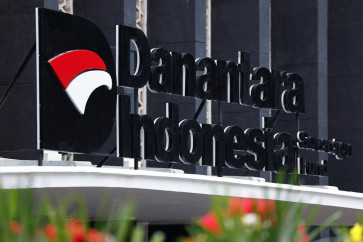Popular Reads
Top Results
Can't find what you're looking for?
View all search resultsPopular Reads
Top Results
Can't find what you're looking for?
View all search resultsFish consumption program targets pregnant mothers
Hundreds of pregnant mothers packed the Marine and Fisheries Ministry’s Mina Bahari 3 building convention room on Wednesday to join a familiarization event to socialize the benefits of consuming fish
Change text size
Gift Premium Articles
to Anyone
H
undreds of pregnant mothers packed the Marine and Fisheries Ministry’s Mina Bahari 3 building convention room on Wednesday to join a familiarization event to socialize the benefits of consuming fish.
The event is part of a government program aimed at increasing fish consumption nationwide. National fish consumption in 2010 was 30.47 kilograms per capita per year. The government hopes to raise the figure to 31.40 kilograms this year and 38 kilograms by 2014.
Reni Noviani, 34, said that she found the event useful. Being five months pregnant with her first child, Reni said that she had always preferred fish to other protein-based foods.
“For me, it is not difficult to follow the suggestion to consume fish because fish is delicious, healthy and relatively affordable,” she said.
A similar response came from Agustina, 39, a resident of East Jakarta, pregnant with her second child. Being a native of Tanjung Balai Asahan, North Sumatra, she said that fish had been a regular part of her diet since her childhood.
Maritime Affairs and Fisheries Minister Fadel Muhammad said that the government targeted pregnant mothers for the campaign because survey results found that many Indonesian children lacked Omega 3, a substance found in fish, which is thought to be capable of strengthening an infant’s immune system and prospects for healthy growth.
“We also found that many mothers have difficult pregnancies due to illnesses caused by lack of Omega 3 consumption. We want to change this through the campaign,”
Fadel said.
Compared to neighboring countries, fish consumption in Indonesia remains relatively low. Malaysia has reached 55.4 kilograms per capita per year; Singapore 37.9 kilograms per capita per year.
“Java has the lowest fish consumption rate across Indonesia. Eastern Indonesia already has a high fish consumption rate; almost 40 kilograms per capita per year,”
he said.
“This program targets pregnant mothers. We will hold familiarization [efforts] in villages across the country using local languages. We have prepared a budget of Rp 10 billion [US$1.2 million] for this program,” he said.
Fadel said that with high fish production and low domestic consumption, his ministry tried to protect local businesses by putting a stop to fish imports.
He said that if the imports were allowed, around 2 million tons of imported fish would flood the market. “The import ban is only imposed on fish that we can produce here,” he said.










